Film Name:敦克爾克 / Dunkirk
[Note: This article contains spoilers.]
This film is bound to attract immense attention and polarizing reviews, and for no other reason than that its director is Christopher Nolan.
Having delivered numerous high-quality commercial blockbusters and mind-bending films, Nolan commands a massive global following. I am neither a Nolan fanatic nor a Nolan hater (in fact, the endless wars between these two camps are rather pointless), and I simply wish to share my own impressions. “Dunkirk” marks several firsts for the director in his prime: his first foray into war cinema, his first adaptation of real-life events, his first use of a concise screenplay, his first near-exclusive reliance on IMAX cameras, his first emphasis on visuals and score to drive narrative, and his first bold casting of newcomers in leading roles.
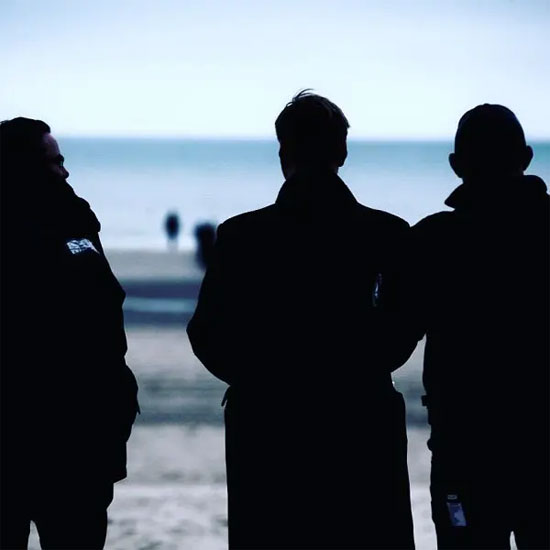
Regardless of how effective these new approaches prove or whether Nolan is genuinely courting the Oscars, his relentless drive to challenge conventions and innovate deserves applause.
Now, let’s examine the film. Adapted from the legendary “Dunkirk evacuation” during WWII, it depicts 400,000 Allied troops trapped on the beaches—cut off from retreat and pursued relentlessly. Even as the German scythe held back, they raced against death until their evacuation to Britain.
Discussing Nolan’s films inevitably brings up his signature “non-linear narrative.” Dunkirk’s three storylines aren’t overly complex. Using my rudimentary skills, I’ve sketched a rough diagram from a linear perspective. While not entirely accurate, it should aid understanding:

One week on land, one day at sea, one hour in the air. These three timelines aren’t perfectly synchronized; they’re fragmented and reassembled into a single story (much like a POV structure). Among them, pilot Collins, shot down and forced to crash-land at sea before being rescued, intersects with the “Moonstone” earlier than the others. Shortly after, the three strands briefly converge: Mr. Dawson and Tommy return to Britain with the others, while pilot Farrell is captured.
Each strand stands alone as a compelling mini-story.
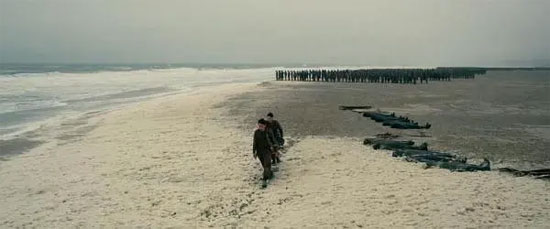
After meeting French soldier Gibson, protagonist Tommy forms a “do whatever it takes to survive” partnership. They carry wounded soldiers onto an International Red Cross ship, are kicked off, hide beneath the docks, sneak aboard an artillery regiment ship during chaos, survive a torpedo blast, reach shore via lifeboat, and follow others into a stranded fishing boat awaiting high tide…
When rescue finally came, Gibson had perished, leaving Tommy and fellow anti-aircraft gunner Alex to survive.
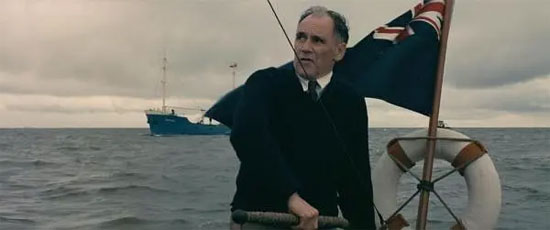
Mr. Dawson insisted on crossing to rescue survivors himself. His son Peter and young assistant George joined him in the boat. En route, they rescued a terrified “cowardly” soldier. Despite his protests, they pressed on toward Dunkirk. During the argument, George was seriously wounded, finally silencing the soldier. After rescuing pilot Collins from the water, they finally reached the shore…
By the time they rescued the large number of soldiers, George had succumbed to his injuries.
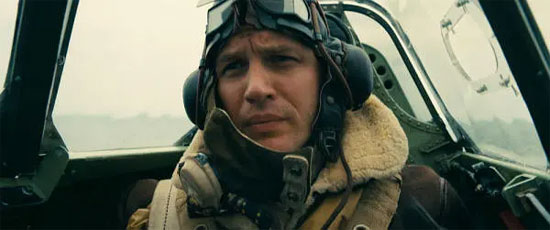
Three Royal Air Force aircraft were on an escort mission when they first encountered German fighters. Tragically, the squadron leader was killed in action. Collins and Farrell pressed on. After a second engagement, Collins also withdrew from the fight, leaving Farrell—unable to read his fuel gauge—fighting alone. Though he should have returned to base, he chose to complete the mission with his last drops of fuel…
Ultimately, Collins shot down multiple German fighters before making an emergency landing in enemy territory, where he was captured by the Germans.
“Dunkirk” isn’t a traditional war film, nor does it qualify as an “anti-war movie.” It features no leaders, no gory carnage, and not even a single German face. The narrative is so sparse and fragmented it feels almost “thin”—which is likely why many find it hard to accept.
However, the film never aspired to be those things. It aims more to capture a snapshot of that historical moment, revealing the authentic, relatable human side.
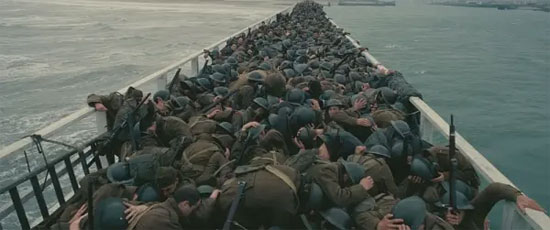
Nearly 400,000 people were trapped near the coastline awaiting evacuation. Every minute and second was filled with an invisible oppression and agony. When the entire environment sapped one’s will to fight, leaving only the desperate desire to escape to the other side, no words or actions felt out of place or false.
As German bombers descended, soldiers huddled on the ground could only cower helplessly. Even the futile attempts by a few to return fire felt more like venting their uncontrollable terror. Most could only cover their heads, eyes shut, praying not to be struck.
Beyond familiar faces like Tom Hardy, Cillian Murphy, and Mark Rylance as Captain Dawson, viewers inevitably feel a sense of face blindness setting in.
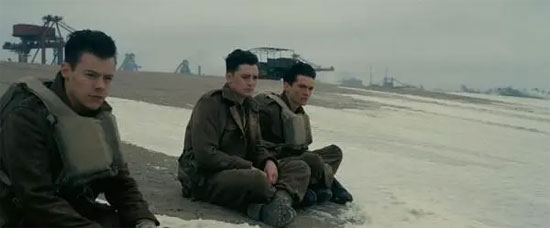
This is precisely the effect of casting numerous newcomers. Aside from a few highly recognizable characters, most roles often blur into indistinguishable figures—much like on a real battlefield. Upon closer inspection, each face is unique, yet within the larger setting, everyone blends into a uniformity: dark brown uniforms, gleaming steel helmets, bulging life jackets, somber eyes, downturned mouths, expressions that could extinguish hope at any moment…
This “realism” isn’t confined to the uniformity of the soldiers; it permeates every character.
Take George, who jumps aboard without permission and joins Mr. Dawson and his son on their rescue mission.
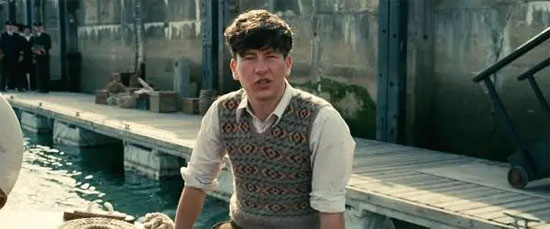
Mr. Dawson is a seasoned veteran who knows his craft. Pete doesn’t want to be outdone by his father. Both understand what they’re doing, but George may not. Beyond the shared urgency to save lives, he likely craves participation in this historic operation—to see the world, to experience war firsthand. His unemotional “I can help” betrays his trepidation, excitement, and eagerness.
Later, he died from severe injuries sustained in a confrontation with a panicked soldier—a tragic reminder of the inevitable civilian casualties in such historical events.
This includes documented incidents like soldiers stripping off their gear and plunging into the sea, desperately attempting to swim back to Britain… All these are verifiable true events from the Dunkirk evacuation.
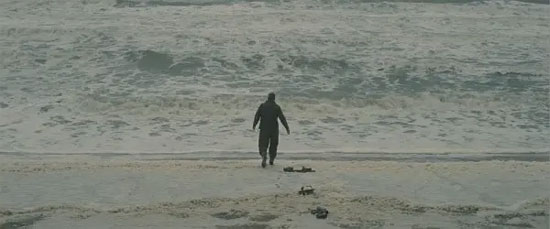
Through countless depictions, large and small, we collectively experienced this great escape.
Hans Zimmer’s score deserves special mention. “Dunkirk” wouldn’t have achieved its impact solely through Nolan’s storytelling and visuals. The music masterfully heightens tension, advances the narrative, and in many moments even overshadows the visuals to become the primary force shaping the atmosphere. It fully engages the audience’s emotions, creating an immersive experience so compelling it’s no exaggeration to call it “stealing the show.”
Given all this, experiencing Dunkirk as an audiovisual feast in theaters is well worth the price of admission. Perhaps treating it purely as a unique journey through history is the best approach… Yet another question arises: Is a film’s value solely defined by its narrative structure, audiovisual effects, and expressive techniques?
Personally, I lean toward more traditional, well-crafted narratives, so Dunkirk’s emphasis on cinematic techniques and effects didn’t particularly move me. Yet this doesn’t negate its inherent value or the glimpses of humanity it reveals.
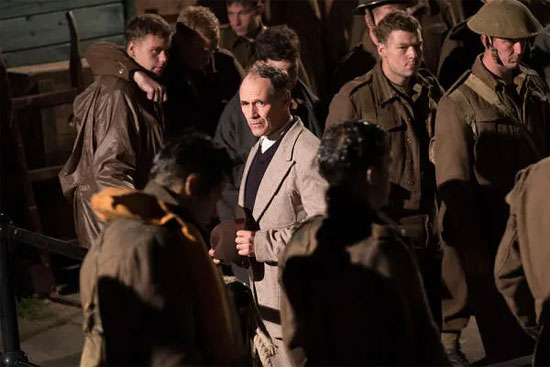
Gibson, a French soldier who didn’t speak English, tossed ropes to Tommy and others in the water. When everyone abandoned the fishing boat, he stood bewildered, plugging holes in the hull.
Pitt once blamed a frightened soldier for injuring others. Yet after George’s death, he couldn’t bring himself to tell the truth, earning his father’s approval. Later, he published an article in the newspaper honoring George’s contributions and sacrifice.
Farrell, risking fuel depletion and crash landing, fought to hit the enemy plane even with a disabled propeller, ultimately burning the aircraft to destroy it before facing the enemy head-on;
Upon returning home, when a soldier berated pilot Collins, “Where the hell were you all?!” Mr. Dawson compassionately reassured him, “We saw your efforts”;
When Tommy, Alex, and others returned home in shame, unable to face their hometown, they were met with beer, applause, cheers, and Churchill’s “We shall never surrender” speech…
The gentleness amid cruelty, the light after darkness—these moments are neither overtly emphasized nor explicitly stated, yet they are undeniably real.
Please specify:Anime Phone Cases » Dunkirk 敦克爾克 2017 Film Review: The immersive sense of insignificance and authenticity